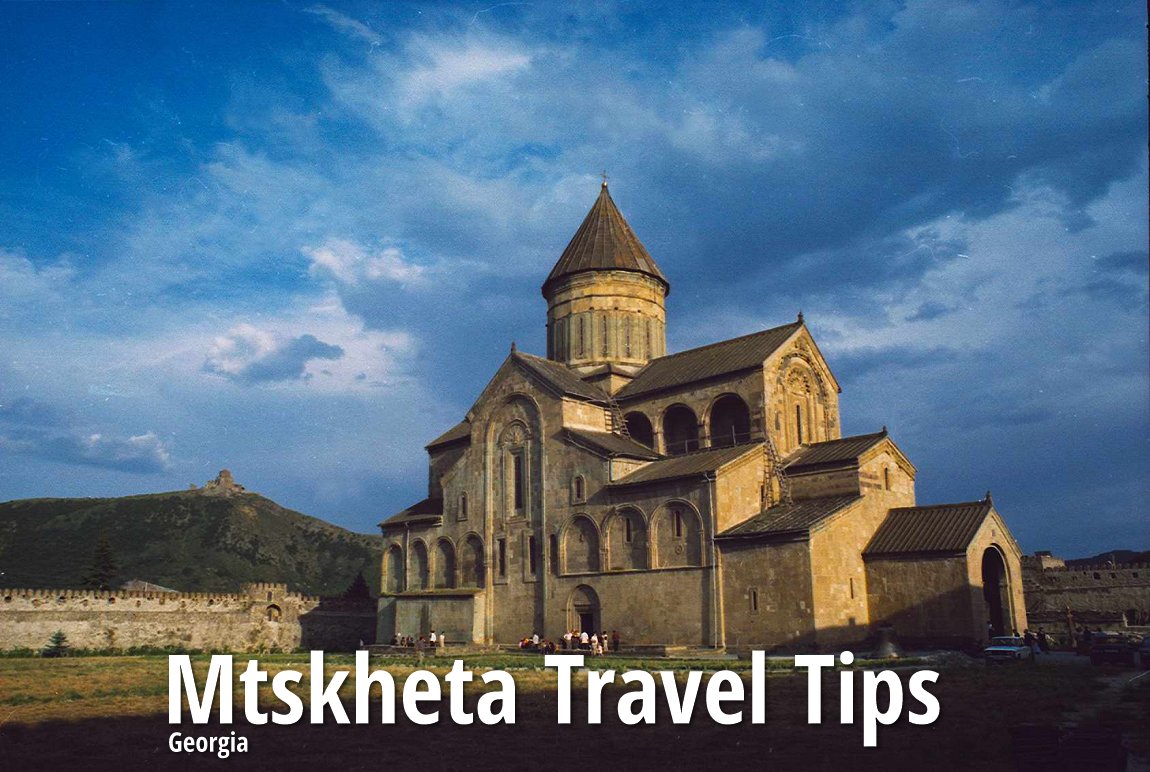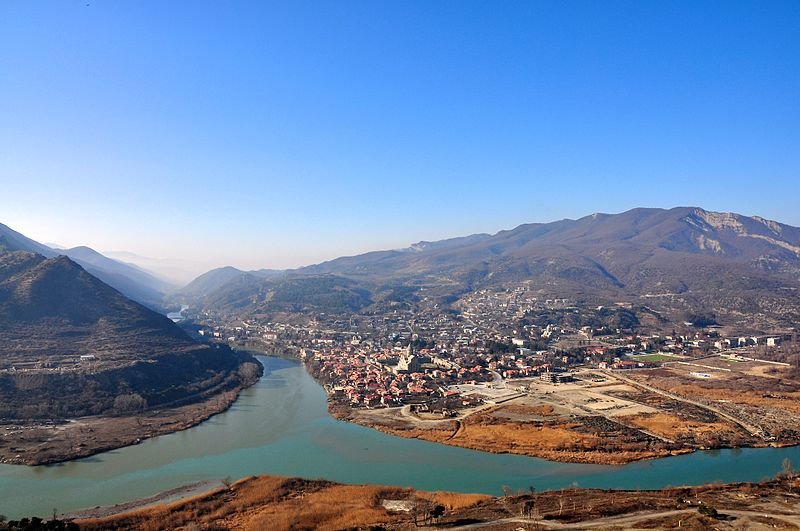 Svetitskhoveli Cathedral, Mtskheta
Svetitskhoveli Cathedral, MtskhetaSource: http://en.wikipedia.org/wiki/File:Svetitskhoveli1.jpg
Author: Sosomk

Author: Sosomk

Mtskheta (Georgian: მცხეთა), located just about 20 km to the north of Tbilisi, is one of the oldest cities in Georgia. The city at the confluence of the Aragvi and Kura rivers has a population of 20,000 people (2011 estimate). The historic monuments of Mtskheta are collectively recognized by UNESCO as a World Heritage Site. However due to the deterioration of the stonework and frescoes, the monuments were also now on the List of World Heritage in Danger.
The history of a settlement in Mtskheta goes back to 1000 BC. From the 3rd century BC to the 5th century AD, it was the capital of the Kingdom of Iberia. Mtskheta was the first site where Christianity was introduced into Georgia, and it was where the faith was proclaimed as state religion of Georgia in AD 337. Today it is still the headquarters of the Georgian Orthodox and Apostolic Church.
Mtskheta served as capital until the 6th century, when King Dachi I Ujarmeli relocated the capital to Tbilisi, which offers better defense. Nonetheless Mtskheta continued to serve as the site of coronation and burial of Georgian rulers, right up to the end of the kingdom in the 19th century.
 Scenic landscape of Mtskheta, Georgia
Scenic landscape of Mtskheta, GeorgiaSource: http://commons.wikimedia.org/wiki/File:Mtskheta_(2011)..jpg
Author: Simon

Author: Simon

The Old Town of Mtskheta is well preserved, with monuments reflecting its long history. Its position as the political and religious core of Georgia is reflected in its monuments today.
Visiting Mtskheta
You can reach Mtskheta by taking a taxi from Tbilisi. There are also minibuses (marshrutkas) from Tbilisi's Didube Market to Mtskheta.Places of Interest in Mtskheta
- Armaztsikhe Fortress
3rd century BC fortress, today in a state of ruin. - Jvari Monastery (Monastery of the Cross)
6th century Georgian Orthodox monastery on a rocky mountaintop. - Pompey's Bridge
Remains of a bridge built by Roman legionnaires under Pompey the Great in the 1st century BC. - Samtavro Transfiguration Orthodox Church
Church and nunnery of St Nino, built by King Mirian III of the Kingdom of Iberia in the 4th century, and reconstructed by King George I in the 11th century. - Svetitskhoveli Cathedral (Cathedral of the Life-giving Pillar)
11th century cathedral believed to be the burial site of Christ's mantle. It is one of the most venerated sites in the Georgian Orthodox church.
 Latest updates on Penang Travel Tips
Latest updates on Penang Travel Tips
 Map of Roads in Penang
Map of Roads in Penang
Looking for information on Penang? Use this Map of Roads in Penang to zoom in on information about Penang, brought to you road by road.
Copyright © 2003-2025 Timothy Tye. All Rights Reserved.

 Go Back
Go Back